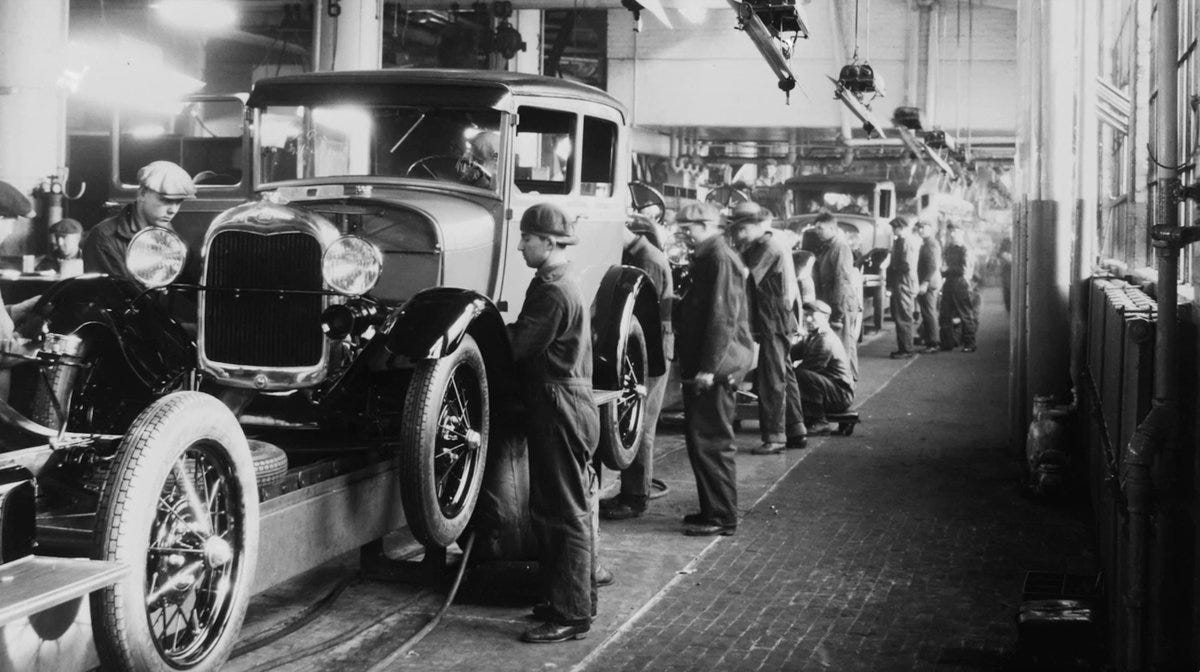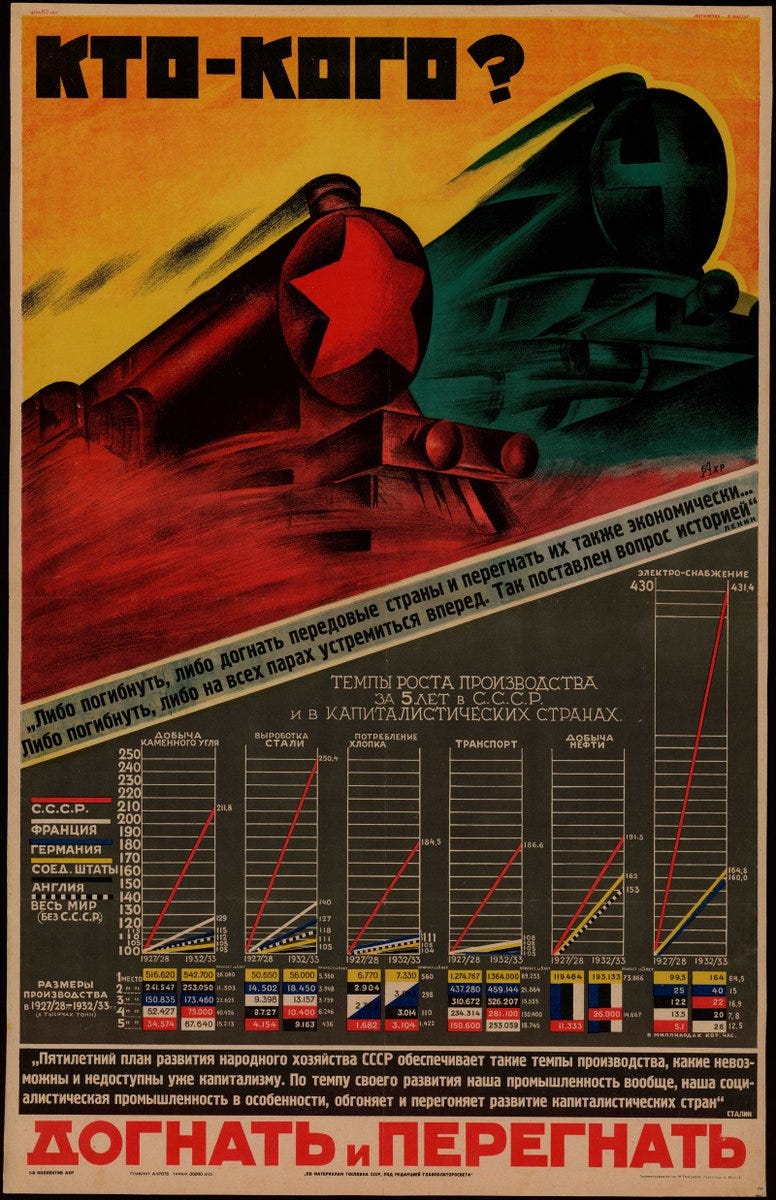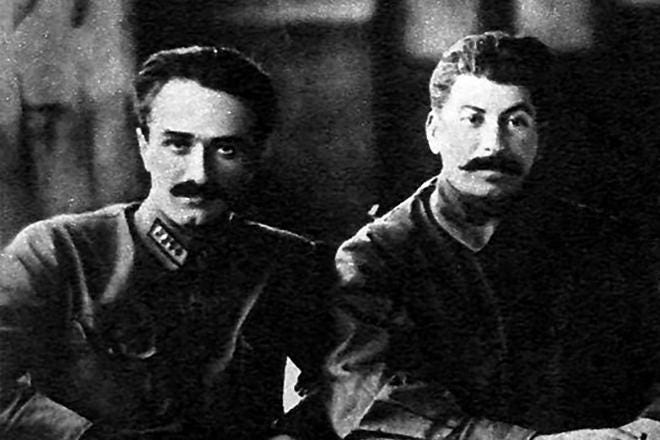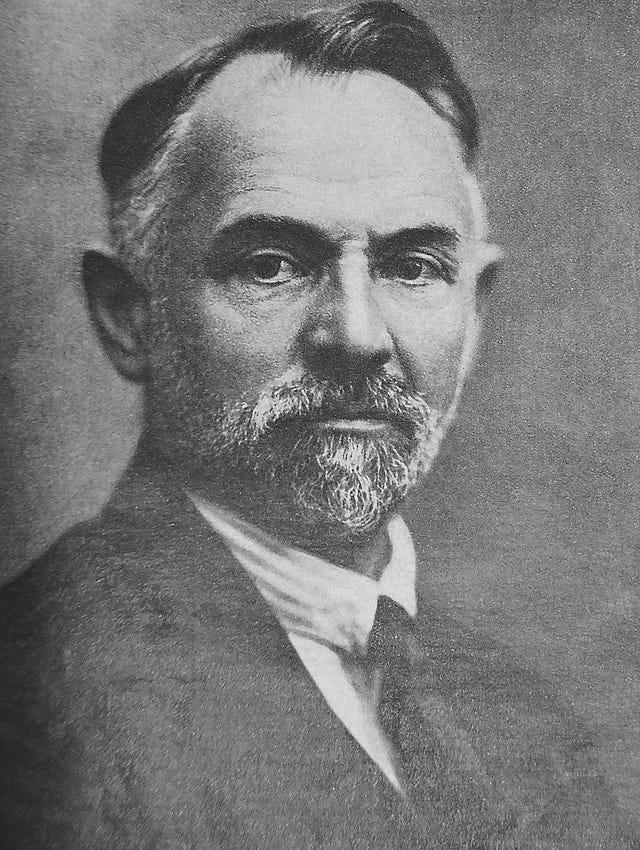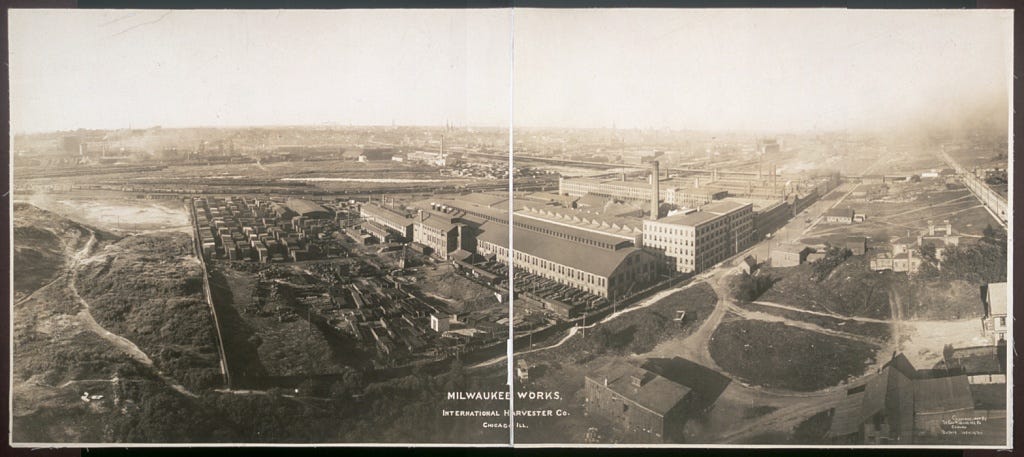Russia is often portrayed as the invincible military power. And yet, this reputation is based on two wars - Napoleonic and WWII. In both cases Russia won only thanks to the alliance allied with *the* leading economic powerhouse of that era
Napoleonic Wars were won because of the Russian alliance with the UK. WWII - because of the alliance with the US. In both cases the leading economic, industrial and technological power of the age supported Russia, giving it almost unlimited credit and supply line
Let's start with the WWII. Early Bolsheviks were absolutely fascinated by America and its industrial power. The last movie Vladimir Lenin watched before his death was the video recording from the Ford assembly lines in Detroit. They dreamed of emulating the American industrialism
Soviet industrialisation is portrayed as the "competition" with the capitalist West. It is a lie. In fact, it was a meticulous emulation of American industrialism. America built Soviet industrial power. American companies, technologies, engineers made the USSR a powerhouse
Most of technological transfer from to the US to the USSR was personaly supervised by Saul Bron. Born in Odessa in 1887, he earned his PhD in Economics at the University of Zurich. After the revolution he became the key figure of Soviet economic policy, specifically foreign trade
Saul Bron was the member of the Supreme Economic Council and CEO of many state owned companies. He headed the Exportkhleb - a company for the grain export to the West and the Bank for Foreign Trade Vneshtorgbank. He supervised most of Soviet trade with the capitalist countries
When Stalin picked up Mikoyan as the commissar for foreign trade, Mikoyan was hesitant and not sure if he could manage it. Then Stalin assured him he would dispatch some experienced people, especially Saul Bron, who could “boost any commissariat”
In 1920s USSR wasn't recognized by the US and thus couldn't negotiate directly. And yet, a number of DC establishment like Senator William Borah, the chairman of the Senate Foreign Relations Committee, had favorable views of the USSR. So some sort of proxy trade was possible
The main proxy for Soviet-American trade was the Amtorg Trading Corporation established in 1924 as a result of merger of a few companies including another quasi private entity Arcos America (Arcos was Soviet proxy for trade with the UK led by Krasin - I'll elaborate next time)
In 1927 Stalin appointed Saul Bron as the CEO of Amtorg Trading Corporation. Theoretically Amtorg was an American corporation. In practice though it was a Soviet proxy controlled by Politburo. It was a monopoly controlling all the Soviet-American trade
As the head of Amtorg, Saul Bron would personally look for and choose American partners who would help with the Soviet industrialization. One of Bron's first findings was a Detroit industrial architect Albert Kahn - here you see them signing a contract
In 1929 Albert Kahn Associates secure a mega contract on designing and supervising construction of the Stalingrad tractor plant. It was modeled after the International Harvester Milwaukee plant. Kahn prepared architectural and engineering drawings including road & railroad access
Kahn company fully organised the entire process. They procured American materials, machinery, and equipment, provided American experts. To put it simply, Stalingrad tractor plant was LEGO. Details were produced in America and assembled in the USSR under the American supervision
The Stalingrad tractor plant was assembled from the details and machinery prefabricated in the US and shipped by the sea. Kahn provided the key personnel - construction supervisors, installation specialists, foremen. It was built from American details and installed by Americans
Keep reading with a 7-day free trial
Subscribe to kamilkazani to keep reading this post and get 7 days of free access to the full post archives.



